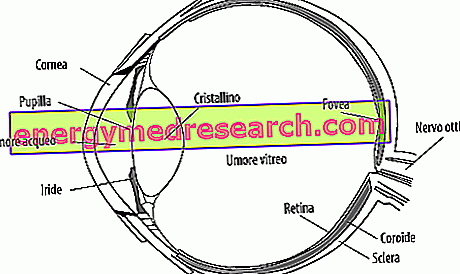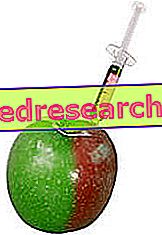Read the introductory article on dental caries
The health of our teeth also passes through what we eat.
Sugar and Caries
Caries is nothing but an infection caused by some microorganisms that populate the oral cavity.
Since the development and proliferation of these bacteria is favored by the food residues that remain in the interstices between the teeth, it is important to associate a proper diet with proper oral hygiene.

the bacteria live in colonies located on the outer wall of the teeth, forming the so-called bacterial plaque.
Like all living organisms, bacteria also need food to survive. For this reason they find fertile ground in the food residues that remain between the teeth.
In particular the nutrients preferred by bacteria are the sugars that are used and transformed into lactic acid, a waste product that can dent dental enamel and cause tooth decay.
Therefore, sugary foods play a decisive role in the formation of caries. The greater the permanence of these foods in the oral cavity, the greater the risk of developing this disease.
Dietary advice to prevent tooth decay
Starting from these two fundamental considerations it is possible to draw up a whole series of dietary rules that it is good to respect:
LIMIT THE SUGAR CONSUMPTION
The most cariogenic sugars are the simple ones, such as sucrose, glucose and industrial derivatives. However it is not enough to limit the direct intake of sugar to prevent tooth decay. Today, in fact, sucrose has become the fundamental ingredient of many foods. It is found in soft drinks, sweets, pastries, and even in breakfast cereals. The limitation of the consumption of sweeteners is therefore a factor that cannot be controlled.
NOT ONLY SUGARS
If it is true that simple sugars are rapidly used by the bacterial flora it is equally true that foods containing complex carbohydrates can be equally dangerous. According to the latest research it seems that the time the food stays inside the mouth is more important than the quantity of sugar contained in it.
The sugary foods can therefore be consumed with a certain freedom provided they are followed by adequate oral cleaning. It is also very important that the nutrition is balanced and that it brings all the vitamins and minerals necessary to ensure the health of dental tissues (calcium, magnesium fluorine and phosphorus in the first place).
AVOID "STICKY" FOODS
Sugary foods that tend to stick to teeth like caramel are very dangerous because, as we saw in the previous point, they remain inside the oral cavity for a long time, exposing the teeth to acid attack.
Find out which foods cause tooth decay »
DON'T SUCCESS
The bad habit of sucking candies or chocolates between meals is one of the major risk factors, both because in this way the time the sugars stay in the mouth increases, and because they are unlikely to be followed by adequate oral hygiene.
FREE TRIP TO POLYALKS AND ALL OTHER NON-CHARGING SUGARS
In nature there are sugars with cariogenic power very low or even absent, others are instead reproduced in the laboratory by man.
Among the most widespread it is good to remember fructose and polyalcohols. The latter have, among other things, a lower caloric value than sugar, and remove the danger of diabetes and overweight. They are not toxic but if consumed in excess they have a laxative effect.
Curiously, some of these sweeteners even perform a positive action on oral hygiene. Think, for example, of xylitol which with its strong antibacterial activity is able to prevent tooth decay.
BEWARE OF YOUR CHILDREN
Until the end of adolescence one is more exposed to the risk of caries both for constitutional factors (lesser dental mineralization) and for food (greater propensity to consumption of sugars).
In fact, at a young age the sensitivity towards the sweet taste is more pronounced, pushed and amplified by the food industry which offers very appetizing but also very sweet foods. It is estimated that by the age of 6, almost two-thirds of children develop at least one tooth decay.
The parent can try to educate the child's palate by decreasing the sugar content in homemade foods. In any case, without depriving the child too much, it is essential to impose and teach the importance of correct oral hygiene.
LIVING THE PALATE
Even the sensitivity and preference to the taste of sweet or savory can be educated. This process generally occurs spontaneously as we age. Not surprisingly, data in hand, after forty years the probability of developing caries decreases.
WATER CAN ALSO HELP
Some Italians have had the brilliant idea of adding fluoride to drinking water. This mineral has a protective action on the teeth because together with calcium it forms a very resistant substance, which deposits itself like a patina on the surface of the tooth, defending it from external attacks. Tea, cereals and foods of marine origin are excellent sources of fluoride. However, we must be careful not to abuse it, because an excess of it can be as damaging as, or perhaps more than, its defect. For this reason the opportunity to add fluoride to mineral water is quite controversial.
MASTIC THAT IS GOOD FOR YOU
The mineralization of the teeth is stimulated by the mechanical stresses of chewing. Nowadays, among the juices, teas, soups and smoothies the stimuli on the teeth are lower than in the past. Especially during the growing period it is therefore advisable to train chewing, both to strengthen the teeth and to improve the chewing function.
Find out which foods protect from tooth decay »
WHAT DO YOU SAY ABOUT A CHEWING-GUM ?:
Even if chewing gum cannot and should not replace tooth cleaning with a toothbrush and floss, it can still be useful to prevent tooth decay. Prefer those containing protective substances such as fluorine or xylitol, obviously to avoid all those containing sugar.
Chewing gum stimulates salivation which, as we know, contains antibacterial substances and stimulates the rebalancing of the oral pH, alkalizing it.
Summarizing the contents of this article we can conclude by stating that: "A healthy and balanced diet combined with good oral hygiene is the best way to protect teeth and remove the risk of tooth decay"



